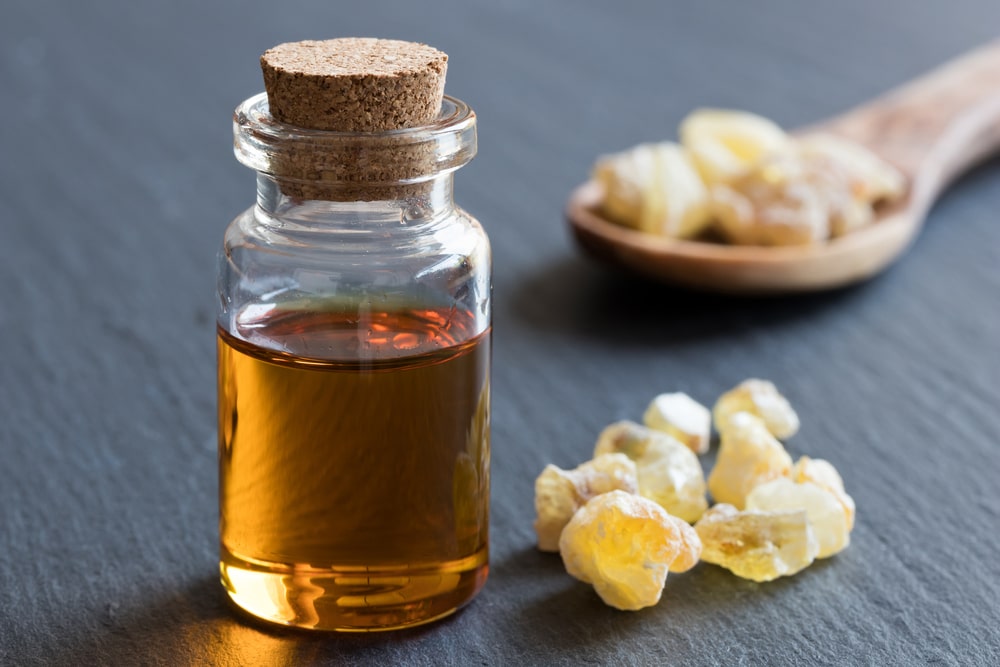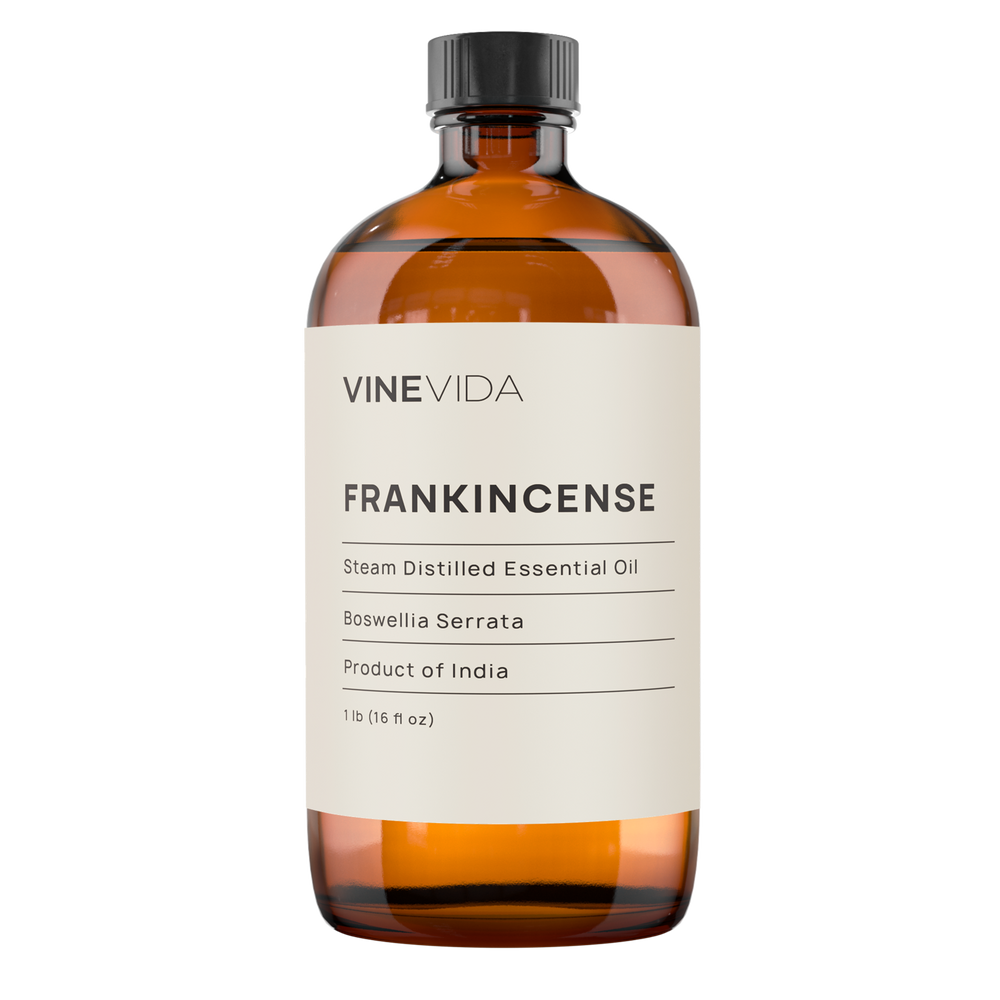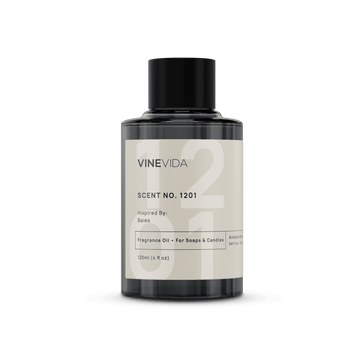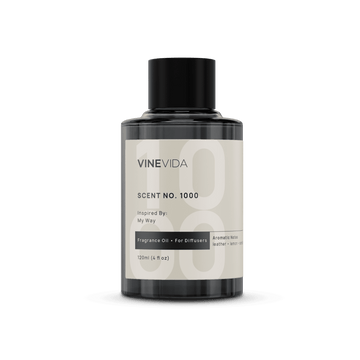In recent years, the interest in frankincense oil has increased tremendously, which may have you wondering how to use frankincense oil.
Frankincense oil is comprised of a powerful combination of components that makes it beneficial for not only skincare but a variety of other uses as well. It can be inhaled or absorbed through the skin in topical applications. It should be diluted at 3% in a carrier oil, 3 drops in a teaspoon of oil.
Frankincense oil is perfect for relaxation, meditation, assisting with breathing issues, and preserving your skin. (The Secret Healer, 2014)
How To Use Frankincense Oil - History
Frankincense essential oil is distilled from the milky white sap of the frankincense tree. In many cultures, such as Indian or Arabian, frankincense oil is believed to bring good health and cleansing of the body and home.
In Ayurvedic medicine, Frankincense is referred to as “dhoop.” It is used for such things as healing wounds, relieving anti-inflammatory issues - like arthritis, as well as to purify the air in your home.
In ancient times, its value surpassed gold, and it was often used in North Africa, the Middle East, and Egypt as far back as 3000 BCE. It’s believed that Hippocrates had numerous uses for frankincense resin, including toothaches, healing wounds, and indigestion.
Frankincense resin should not be mistaken for frankincense oil, but it is interesting to note that its components are known to assist with these same things today.
Frankincense was one of the “three gifts for the magi.” It has also been linked to Cleopatra’s beauty routine. The components in Frankincense oil are known for their antiseptic, astringent, and anti-inflammatory properties.
Related Content: What Is Frankincense Essential Oil Used For?
How To Use Frankincense Oil - On Your Skin
Frankincense oil contains components that promote cell regeneration and keep your cells and tissues healthy. With the help of these components, applying frankincense oil to your face can help prevent wrinkles and lift and tighten the skin.
The combined antibacterial, antiseptic, and antioxidant qualities included in the components of frankincense oil work together to protect the skin by helping it heal from damage and reducing inflammation, which is excellent for people with eczema, burns, bites, and rashes.
The chemical properties of frankincense oil will help reduce the appearance of skin imperfections. Consider razor burn. It’s a fact of life and can be irritating. We’ve added a tremendous DIY serum listed below to soothe your irritated skin.
Another way aromatherapists use frankincense oil is to relieve dry and cracked skin. Simply blend frankincense oil with your favorite moisturizer or hand lotion to help hydrate and rejuvenate your skin.
Not only will your hands feel better in no time, but the spicy scent of frankincense oil will last throughout the day. And speaking of your hands, don’t forget your fingernails. Simply combine a few drops of frankincense with the carrier oil of your choice and massage your fingernails and cuticles when they are dry or when traveling in dry areas.
You can also keep a blend of frankincense and carrier oil in your shower. Add it to a washcloth to help moisturize skin, as well as the added benefit of a frankincense “steam bath” at the same time.
Related Content: What Is Frankincense Essential Oil Good For?
How To Use Frankincense Oil - In The Home
Historically, healers have used frankincense oil to help soothe anxiety, increase focus, and decrease stress. Inhaling a blend of frankincense and carrier oil before meditating or simply diffusing while you’re meditating or preparing for the day can help reset the mind and prepare you for the future.
The aroma evokes a sense of grounding and allows you to take stock of the present. When feeling down or struggling with emotions, find a diffuser blend that includes frankincense, or try the DIY recipe listed below.
How To Use Frankincense Oil - For Health
Aromatherapists have historically used frankincense oil in various home health remedies, including those for coughs, respiratory issues, and chest congestion. You can add a drop of frankincense oil to a DIY chest rub or one you’ve purchased off the shelf.
You can also create a steam inhalation by adding a few drops of frankincense oil to a bowl of hot water. Next, place a towel over your head and breathe in the aroma. Remember to take breaks out from under the towel if you need a gasp of fresh air, and do not place your face too close to the steam.
Components found in frankincense oil contain anti-inflammatory properties meaning that frankincense oil may be beneficial for people who have arthritis and other joint pains. A blend of frankincense and carrier oil may also help work out morning stiffness when massaged into problem areas.
This blend can also be used at the end of the day to help with sore muscles as you settle in to relax for the evening. Frankincense oil is also great for restoring elasticity to tissues. Stiff tendons, torn ligaments, or sore hamstrings will thank you when you utilize a frankincense-blended massage oil.
Related Content: How to Use Frankincense Oil on the Face
How To Use Frankincense Oil - For Cancer
Often, people want to learn how to use frankincense oil because they have heard it can help cancer. Unfortunately, this is not true for essential oils. Early research shows there are constituents in frankincense resins that may help slow tumor growth, especially in bladder and breast cancer. However, the one component we know may be doing this is a giant molecule called boswellic acid.
When frankincense essential oils are distilled, steam is pushed through the resin, trapping molecules in vapors. The liquid is then cooled. Since oil and the essential oil sit on top of the water. Given this, molecules in the essential oil are tiny.
The boswellic acid molecule is too large to pass through distillation and, sadly, is not in the essential oil. That is not to say we might not discover other constituents that may hopefully help in the battle against cancer, only that so far, we have no evidence that any exist. Nevertheless, staying positive, calm, and hopeful is a massive help in fighting the disease, and frankincense essential oil can help with this.
How To Use Frankincense Oil - Safety
Pregnant women in their first sixteen weeks should not use frankincense oil. In addition, you should be mindful not to use it around your eyes as it can irritate the eyes and the area around them.
You should always do a patch test before applying any essential oil to your skin to ensure you do not react. And no matter how gentle essential oils are, they are still potent extracts and must not be used on the skin undiluted.
Related Content: How To Use Frankincense Essential Oil for Skin Care
DIY Recipes To Use Frankincense Oil
Razor Relief Skin Serum
Ingredients:
- ½ cup Coconut Oil (Cocos Nucifera)
- 5 drops Frankincense Oil (Boswellia carterii)
- 5 drops Lavender Oil (Lavandula angustifolia)
- 5 drops Tea Tree Oil (Melaleuca alternifolia)
- 5 drops Helichrysum Oil (Helichrysum angustifolium)
- 5 drops Myrrh Oil (Commiphora myrrha)
Instructions
- Place coconut oil and rosewater in a glass spray or pump bottle.
- Add essential oils and shake.
- To use, spray directly on the skin or place two to three pumps in the palms and rub on the affected skin.
Safety: Pregnant women should not use it during their first 16 weeks of pregnancy.
Quiet Comfort Diffuser Blend
- 3 drops Lavender Oil (Lavandula angustifolia)
- 2 drops Frankincense Oil (Boswellia carterii)
- 2 drops Tangerine Oil (Citrus tangerine)
Safety: Not for Topical Use.
How To Use Frankincense Oil - Conclusion
The use of frankincense oil has increased over the last few years, and with ongoing research, this increase is sure to continue. As with any essential oil, be mindful of diluting correctly and testing for irritations before using consistently. Frankincense has an earthy, sometimes woodsy, and somewhat spicy aroma pleasing many people.
Frankincense oil can quickly be diffused, inhaled, or applied topically with the proper use of carrier oils. In addition, the components that makeup frankincense oil are known to have various benefits, making frankincense oil a “must-have” in many homes.















